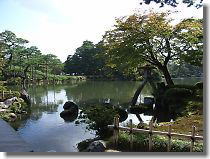 |
 |
 |
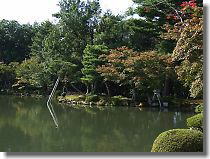 |
| Kotoji Stone Lantern: This is the ideal spot to enjoy panoramic views. |
|
|
|
|
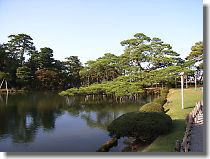 |
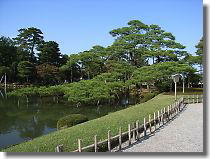 |
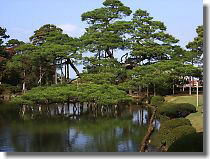 |
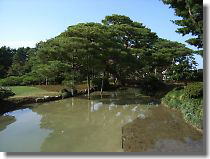 |
| Karasaki Pine Tree: This black pine was planted by the 13th lord Nariyasu. |
|
|
|
|
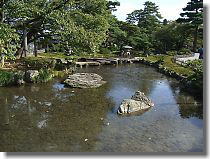 |
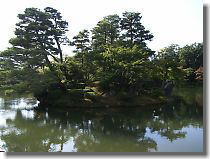 |
 |
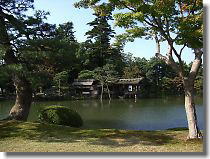 |
| Uchihashi-tei Tea House: One of the four tea houses in Renchi-tei garden,
standing at Kasumiga-ike pond. It was moved to the current site in 1874. |
|
|
|
|
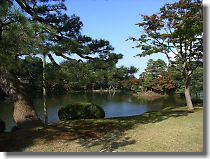 |
 |
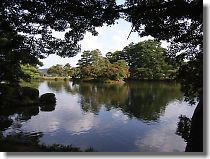 |
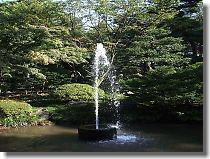 |
| Kasumiga-ike Pond: 5,800 m2, has sites of beautiful scenery with Sazae-yama
hill, Uchihashi-tei tea house, Kotoji lantern, Niji-bashi bridge, Karasaki
pine tree. |
Oldest fountain in Japan: using height difference of the two waters. |
|
|
|
|
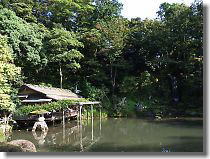 |
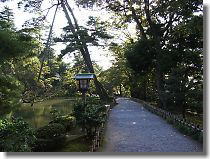 |
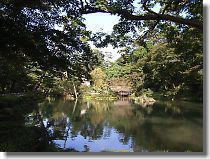 |
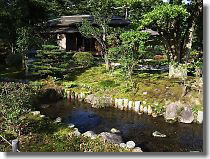 |
| Yugao-tei, Gourd Tea House: built in 1774. |
Hisago-ike Pond: development of Kenroku-en is said to have started from
around this area. |
Curved Water Flow starting Tatsumi service water |
|
|
|
|
 |
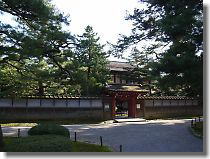 |
 |
 |
| Seisonkaku is a residence that Yoshuyasu Maeda, feudal lord of 13 generations
in Kaga clan built for mother |
Trees of season cover around "Curved Water" |
Wagtail Island |
|
|
|
|
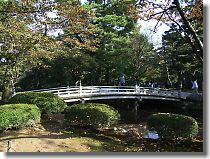 |
 |
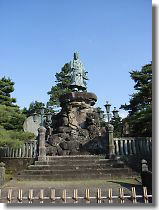 |
 |
| Wooden Flower-watch Bridge |
Root-up pine of which root went out 2m on the ground |
Bronze statue built first in Japan in 1880 |
Bridge named as "Gaggle of wild geese" |
![]()
